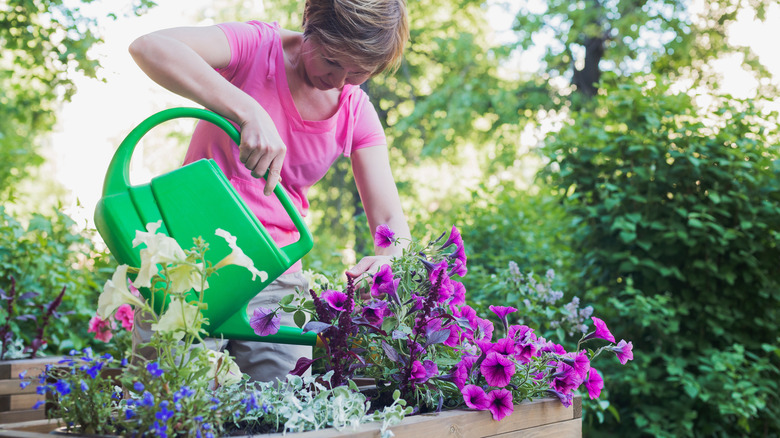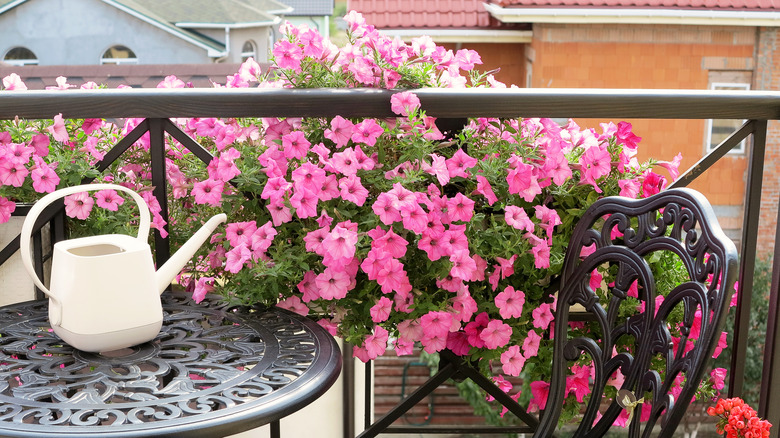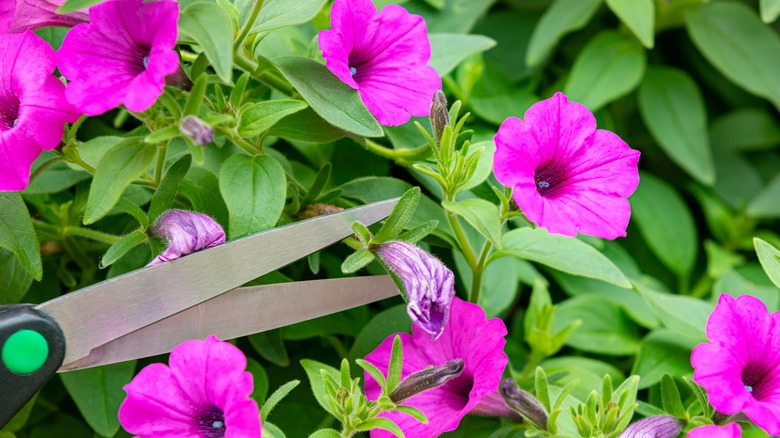How To Water Petunias In Summer Heat
Of all the flowers we can grow each spring and summer, petunias are often a go-to garden favorite. Their vibrant and bold colors, sometimes featuring dark veining and speckling, draw us in, along with their unique trumpet-like form. They are the perfect flower for drawing hummingbirds, butterflies, and bumblebees, lasting in our gardens until a winter frost sets in. Petunias are native to South America and grown as both annuals and perennials. If cared for properly, they tend to be quite resilient, especially in hotter climates.
As summer reaches its culmination and we are experiencing the hottest days of the year, it will be crucial to adjust the watering schedule of your petunias to ensure they continue to thrive. In early spring, petunias will likely only need to be watered once a week. But that watering and care schedule will need to increase if you want them to survive the most sweltering parts of the season. Depending on where you've planet your petunias — in pots, hanging baskets, or flowerbeds — the how and when to water will slightly differ to best fit each root system.
The how and when of watering petunias
In mild temperatures, you'll likely find yourself watering petunias once a week, but this will need to increase to at least twice a week or possibly once every few days in extreme heat. To determine if your flowers are ready for another watering, test the soil's dryness level. If the top 3 to 5 inches are dried out, it is time to refresh the water supply. Visible signs that your petunias are thirsty include drooping flowers, discoloration, and cracked soil.
How you water petunias will hold just as much merit as how frequently. Petunias, and most all plants, prefer deep watering over shallow ones. You want to be sure that you're not just soaking the first few inches of the soil and calling it a day. Instead, the water should be reaching farther down so that even the longest roots will receive a fresh drink.
Deep watering doesn't mean overwatering; it is still important to be wary of drowning your plants. Moistening around 8 inches deep is usually a safe depth. Allowing water to reach the most extensive parts of the plant will result in healthier and stronger roots and increase the petunia's water retention so that they can survive better in tumultuous conditions. Additionally, because flowers in pots and hanging baskets don't have the ability to root in such great depth, they need to be watered more often than those planted directly in the ground.
Additional petunia care
While an excellent watering schedule is a large part of successfully growing petunias in the summer heat, it is not the only factor at play. To produce the healthiest and brightest flowers, you should also focus on giving them adequate sunlight, applying fertilizer, and pruning the plants routinely. Petunias need at least six hours of sunlight daily, so be sure they are not suffering in shaded spots. As your flowers work overtime in hot temperatures, they will be burning through nutrients much quicker. Fertilize petunias approximately once every two weeks, adding in watering so that fertilizer burn isn't as much of a risk. It is also better to water in the morning rather than late afternoon to allow plants ample time to absorb the water before the day reaches its hottest point.
Pruning your petunias will aid new growth and avoid stringy, depleting foilage. You may notice long stems that have gone bare yet still wield one or two flowers at the end. These extended and mostly empty stems won't produce new growth and should be trimmed. When pruning, you will remove dead flowers, leggy stems, and sometimes portions of the plant that look perfectly healthy. A good rule of thumb is to cut back stalks that are 8 inches or longer right above a node. Performing this a few times a week will be plenty to help your petunias continue producing fresh blooms throughout the season.


